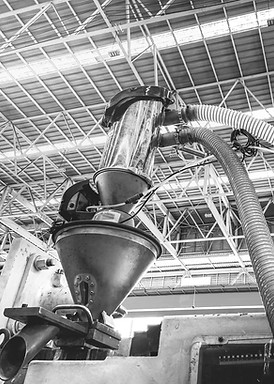TPE Recycling
Plastics are one of the most common materials used to manufacture goods today and they are here to stay. However, with a focus on sustainability, not all types of plastic are equally recyclable. Some, like PET and HDPE, are widely recycled and commonly used. Others, like PVC, PP, LDPE and PS are less commonly accepted for recycling due to various reasons.
Thermoplastic elastomers (TPE) are an upcoming type of plastics and are specifically known for their recyclability. In the below paragraphs, we zoom in on that.
History of TPE and Recycling
-
Mid 20th century
Because of its versatility and its high compatibility with other plastics, TPE’s are an attractive option for environmentally conscious applications with a focus on recyclability. It hasn’t always been like that however, as in the early stages, TPE's presented challenges for recycling due to their complex structures and blends. The mix of thermoplastic and elastomeric components made separation and reprocessing difficult. Recycling technologies at that time were not fully equipped to handle the diverse formulations of TPE's efficiently.
-
Late 20th and early 21st century
Over time, as demand for more sustainable practices increased, researchers and manufacturers focused on developing better recycling techniques for TPE's. Innovations in sorting technologies and improved recycling processes have facilitated the separation and recycling of TPE materials. But despite advancements, challenges in recycling TPE's persist. Factors such as the diversity of TPE formulations, contamination issues, the need for specialized recycling facilities, and economic viability have affected widespread TPE recycling.
-
Recent years
In recent years, there has been a notable shift towards more sustainable practices in the plastics industry, with a stronger emphasis on circular economy principles. Efforts to improve TPE recyclability and expand recycling capabilities are ongoing, aiming to make TPE's a more environmentally friendly and economically viable option in the future.

Advantages
TPE’s have many advantages in terms of recyclability
01
Thermoplastic Nature
TPE's are thermoplastics, meaning they can be melted, reshaped, and remolded when heated. This characteristic allows them to undergo multiple heating and cooling cycles without significant degradation in their properties, making them amenable to recycling.
02
Reprocessable
TPE's can be reprocessed using various conventional plastic processing methods, such as injection molding and extrusion. Their ability to be melted and reshaped facilitates their integration into recycling processes
03
Compatibility in Blends
Some TPE formulations have been designed to be compatible with other thermoplastics or within specific recycling streams. This compatibility helps in the separation and recycling of TPE-containing products.
For every pro, there is a con. As it is important to get a full 360 view on TPE and recycling, here are the disadvantages:
01
Complex formulations
TPE's often consist of blends and complex formulations, the diverse chemical compositions can require specialized recycling processes.
02
Contamination Issues
Contamination, whether from mixed materials or impurities, can hinder the recycling process and affect the quality of recycled TPE's.
03
Lack of Infrastructure
Limited recycling infrastructure specifically designed for TPE's can be a barrier. The availability of appropriate recycling facilities and equipment for sorting and processing TPE materials can be insufficient.
To summarize, it is only recently that TPE and recycling gain more attention. With its major inherend advantages compared to other plastics and with disadvantages regarding recycling that can and will be solved, TPE and recycling have a bright future together.